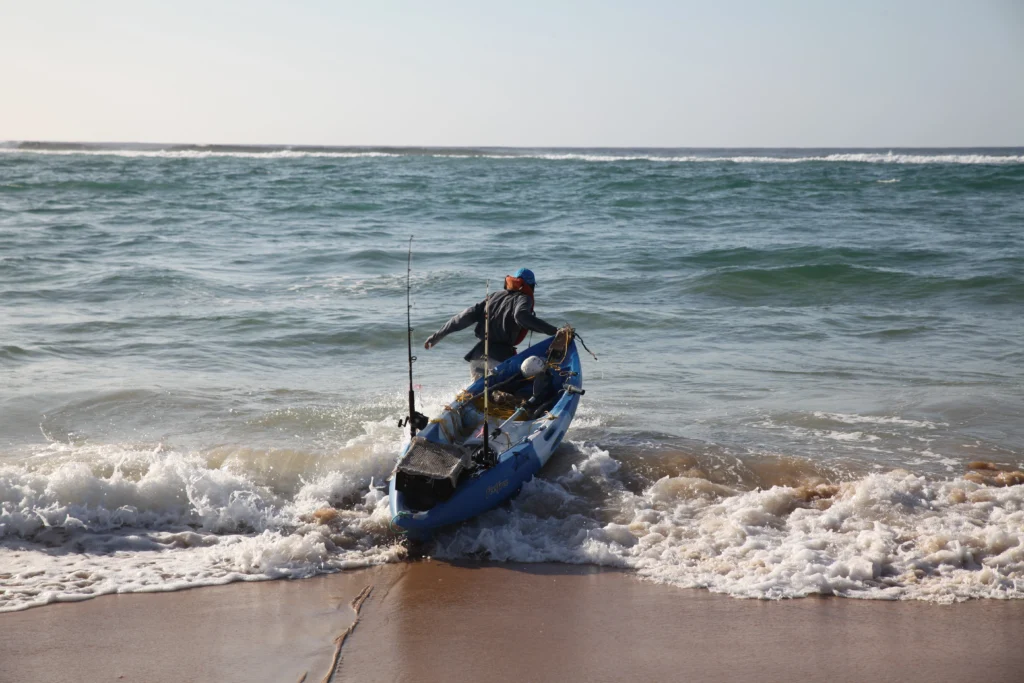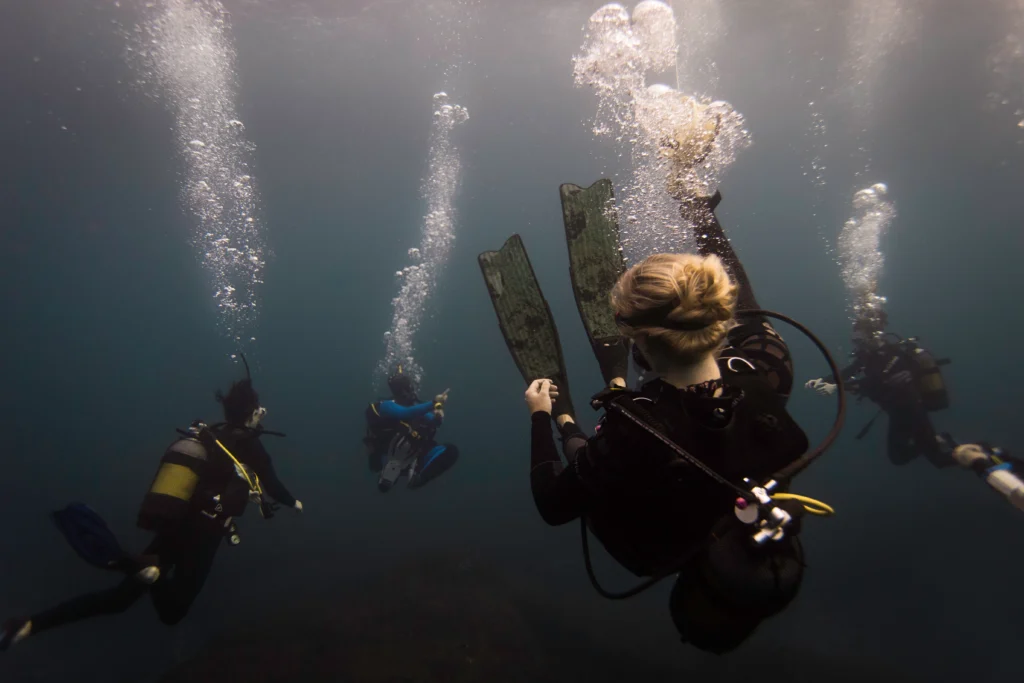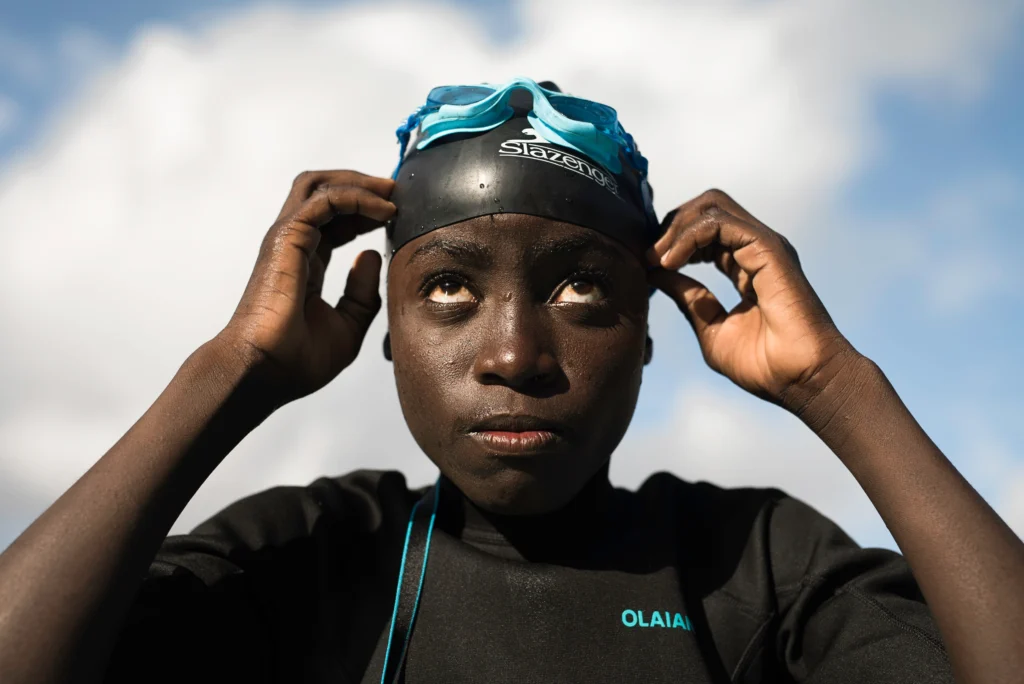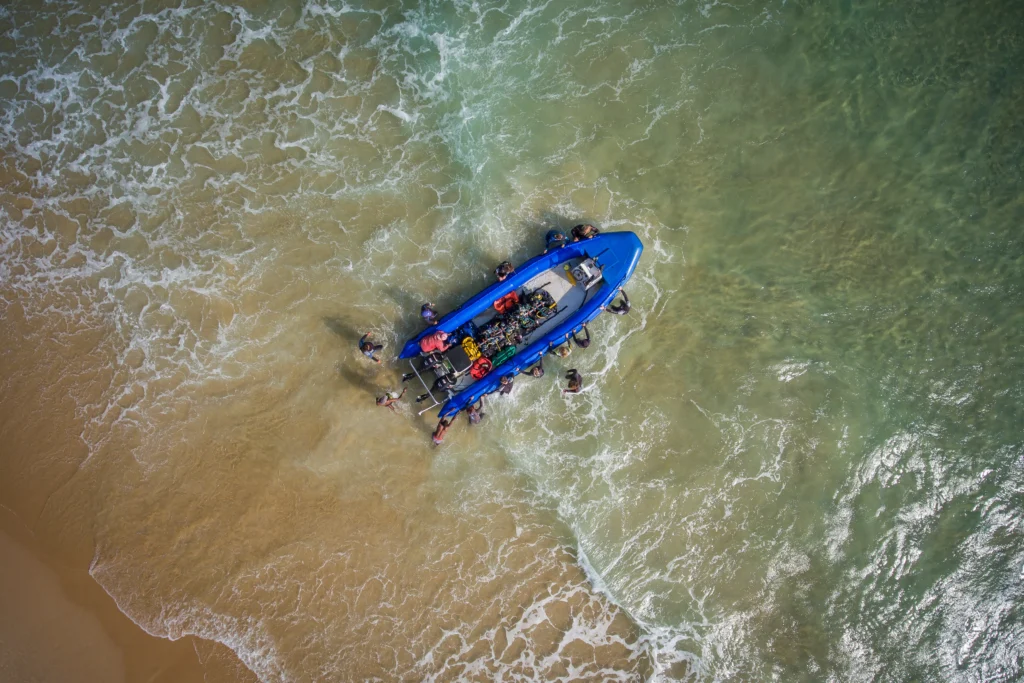Climate change has never been gender neutral, so why do policies, legislation, and conservation work remain largely unresponsive to the intersecting issues of gender inequity and climate change?
Love the Oceans (LTO) is an award-winning marine conservation organisation based in Jangamo Bay, Mozambique designed to tackle conservation using a bottom-up, and innovation-driven approach. The non-profit is founded on the understanding that gender equity is critical for successful ocean conservation, and that local engagement is vital in achieving an effective strategy. Since its establishment in 2013, LTO has grown into a self-sustaining network driven by local community members, aiming to provide a scalable and replicable conservation strategy for communities along the East African Coastline. As an evidence-based organisation, LTO is sustained through close engagement and collaboration with local stakeholders, fostering the economic autonomy, education, skills, and resources needed to protect the ocean and empower the women of Jangamo Bay. Icarus Complex Magazine Researcher, Linda Förster, sat down with founder Francesca Trotham for a conversation about how LTO’s efforts are driving transformative change in Mozambique, and in global conservation strategy.

Linda Förster: In a speech at COP26, you said that “big charities don’t understand the needs of the people they are serving […] and that international NGOs feel the need to provide solutions instead of listening to those who already live there and have the solutions.” This bottom-up, community-based approach is at the core of your mission. How do you foster community engagement and why do you think the bottom-up approach is so important in ocean conservation?
Francesca Trotham: Involving local communities is crucial—both on a small scale by having local individuals on your team and on a larger scale through public engagement. Both are important for ensuring meaningful involvement in conservation work, and we at Love the Oceans are in a very lucky position, in that most of our team are local community members. Local experts have an unparalleled understanding of their ecosystems and communities, and their insights should be at the forefront of conservation initiatives. Partnerships must also always be based on equality and mutual respect, focusing on co-creating solutions rather than imposing external ideas. This also includes investing in long-term capacity building, empowering communities to take charge of their own conservation and development projects. We need to shift the narrative in media and storytelling to highlight local heroes, successes, and resilience rather than perpetuating stereotypes of dependency. Finally, advocating for funding to go directly to grassroots organisations, bypassing intermediary institutions, ensures resources are used effectively and equitably to drive meaningful change.
“Local experts have an unparalleled understanding of their ecosystems and communities, and their insights should be at the forefront of conservation initiatives. Partnerships must also always be based on equality and mutual respect, focusing on co-creating solutions rather than imposing external ideas.”

LF: How do you measure the success of these community engagement efforts?
FT: We’re getting better at collecting and analyzing data. For example, with our swimming initiative for local kids, we track things like gender balance, age groups, and progression through the classes. We also look at retention–whether kids enjoy the classes enough to keep coming back–and their overall progress, such as how long it takes them to move through the levels. For environmental projects, tracking success is difficult because conservation results can often take decades to manifest, like in the recovery of wildlife populations. That’s definitely a challenge, but we’re improving our methods for tracking and measuring outcomes. We’re doing more baseline measurements, taking photos, and documenting changes rather than just relying on observations. Now, when people ask for measurable outcomes, we can show before-and-after data to prove improvements. On a qualitative level, we’ve always believed that if the local community is happy, then we’re doing something right.

LF: Education plays a significant role in your mission. You currently have six different educational initiatives and two more in the works. What educational initiatives are most impactful, especially among young people?
FT: We’ve had a lot of success with our ocean literacy program for kids. We also run a smaller class version for adults, but that’s had more mixed success. Kids tend to be really eager to learn if you make the lessons interactive. Traditionally, lessons in our area are quite formal: you stand up, read a sentence off the board, and then sit down. The way we teach is much more engaging. For example, we’ll throw a ball around, and only the person holding the ball gets to speak. It’s simple stuff, but it keeps younger kids engaged and excited about learning. In terms of swimming, it’s an easy skill to get people interested in once you address parental fears about drowning. Once parents understand that the lessons are taught by qualified instructors in a confined and safe water space, they’re usually very eager to send their kids. Swimming is a life-saving skill, and many families wouldn’t otherwise have the opportunity to learn it. These two approaches; interactive lessons and swimming, have been the most effective and accessible ways for us to reach a wide range of people in the community.

LF: Part of the ethical code you have up on your website is “approving activities involving the community with elders.” How do you adapt Love the Ocean’s educational programs to fit local contexts and ensure local and intergenerational engagement?
FT: Personally, I believe it should be standard practice for every organisation to go through a stakeholder meeting and project approval process, which is essentially just a fancy way of saying going to the elders and getting them to approve the project. We have meetings with one elder and several chiefs of industry regularly. We talk about the project, explain it, and that way community members also have their input. Then the elders generally say yes, sometimes with minor changes. Usually, because the project is proposed by our organisation, which is mostly local community members, it’s already built in a way that benefits the entire community. That said, in a different situation or with a different organisation, you might get a no, and you have to be willing to accept that. I think that element of how our projects run is so important because you need diverse input to create a successful strategy. Ultimately, it makes your ability to roll out the project much more effective.

LF: Love the Ocean aims to create a Marine Protected Area in Jangamo Bay. Do you see the organisation expanding to other coastal areas in Mozambique in the future? What is your vision for the organisation in upcoming years?
FT: I originally named Love the Oceans “Love the Oceans” because it’s such a broad name, giving us the flexibility to operate in different areas. At the moment, our next big growth phase is focused on building our own facility. What we really need is a place of our own: a proper classroom, an education center, and a marine research center. Right now, for example, when we do gender equity workshops, we’re working out of the back of a restaurant, which is not ideal when you need a quiet space for concentrated sessions. A dedicated classroom with a whiteboard and proper resources would make a huge difference. Once we have that foundation in place, we’ll have the capacity to replicate our strategies elsewhere. It’s a long road ahead, but it’s an exciting one. And that’s kind of the point of Love the Oceans; to try and create a strategy that’s public, with the idea that people can replicate it. There needs to be more collaboration in this space, and I think that’s the best way to achieve larger-scale global conservation efforts.
“It’s a long road ahead, but it’s an exciting one. And that’s kind of the point of Love the Oceans; to try and create a strategy that’s public, with the idea that people can replicate it. There needs to be more collaboration in this space, and I think that’s the best way to achieve larger-scale global conservation efforts.”

LF: I’d love to talk more about your gender equity and your women’s health project. You mention on your website that your program “economically empowers women through mussel farming, and improves financial and food security locally,” and that you are seeking to “get more women in the water.” What sparked the gender equity program?
FT: The project itself evolved naturally because we noticed a massive gender imbalance in our swimming lessons. From the age of 13, the number of girls participating dropped off drastically. So, the first thing we did was launch surveys. We call ourselves an evidence-based conservation organisation, which means that we don’t take action without understanding the issue because we don’t want to inadvertently create damage. One of our staff members ran surveys with 200 women in the area to understand the barriers they face in accessing the ocean space. A lot of it revolved around periods and access to menstrual products. The results showed alarming statistics about access to products and economic control–whether women could buy their own menstrual products or if they relied on men in their household to allocate money for them. In most cases, women were dependent on the men, which in turn meant that many women didn’t have menstrual products. This created a barrier to accessing the ocean or attending swimming lessons regularly, especially because girls often come to lessons in groups. If one of them has their period and none of them come, you’re drastically reducing the number of lessons they’re attending. The surveys also highlighted a lack of economic control. Not only could women not afford menstrual products, but they couldn’t travel to town to buy their own contraception pills, for example. Ultimately, this is an issue of bodily autonomy –– one that then led us to look at other gender equity challenges. The average age of marriage in the area is 15, and girls are often married young because they’re pregnant, which ties in with a lack of effective sex education. So, girls get pregnant young, get married, and then follow traditional gender roles of staying home to look after the farm and the family. There’s nothing wrong with that, but the goal of our gender equity project was to give women options to do something else if they wanted to. Another aspect of this is the fact that in Jangamo Bay, women make up 51% of the population, but because they are not involved in conservation meetings, this eliminates input from 51% of stakeholders, which makes for an ineffective strategy. When women are empowered to participate fully in conservation, it not only benefits the environment but also strengthens the social and economic fabric of their communities. Addressing gender inequities in marine conservation is not just about fairness—it directly improves outcomes for communities and ecosystems alike. When women are empowered to participate fully in conservation, it not only benefits the environment but also strengthens the social and economic fabric of their communities. Addressing gender inequities in marine conservation is not just about fairness—it directly improves outcomes for communities and ecosystems alike.

LF: How do you address these challenges to fit them into your holistic conservation strategy?
FT: Our holistic vision has helped evolve the gender equity program into essentially two linked projects. The first introduces women to the ocean space, which involves a lot of swimming. We received a grant from Daughters for Earth last year, which allowed us to train women through a “zero-to-hero” program in swimming. Some women also got certified as lifeguards and swimming instructors. Breaking this cycle requires role models. It’s important to have Black women in those roles so young girls can see themselves in that space and think, “This is an option for me.” The second project is our aquaculture project. The only interaction women have with the ocean on the seafront is harvesting mussels and other shellfish from the rocks. We’re lucky to have an abundance of natural spat (baby mussels) in the area, but the spat outcompetes itself, falls off the rocks, and dies. We’re taking that spat and growing it on ropes in the ocean. Once it matures, it can be harvested for food and income. The women went through swimming training and are now learning kayaking to access the spat in the ocean. They’re also participating in entrepreneurship workshops at Ocean School, which is a “zero-to-hero” program in marine biology. We’re running growth trials to understand how long mussels take to mature. If it’s nine months, for example, women would need nine months’ pay to support planting spat monthly. Then, after nine months, they’d have a continuous cycle of planting, harvesting, and income. This economic empowerment touches on many issues: bodily autonomy, options for marriage, and breaking traditional cycles. Ultimately, women are changemakers, and their initiatives often reshape societies. Economic empowerment reduces poverty, gives people the headspace to care about conservation, and creates more sustainable practices.
“Breaking this cycle requires role models. It’s important to have Black women in those roles so young girls can see themselves in that space and think, ‘This is an option for me.’ Ultimately, women are changemakers, and their initiatives often reshape societies.”

